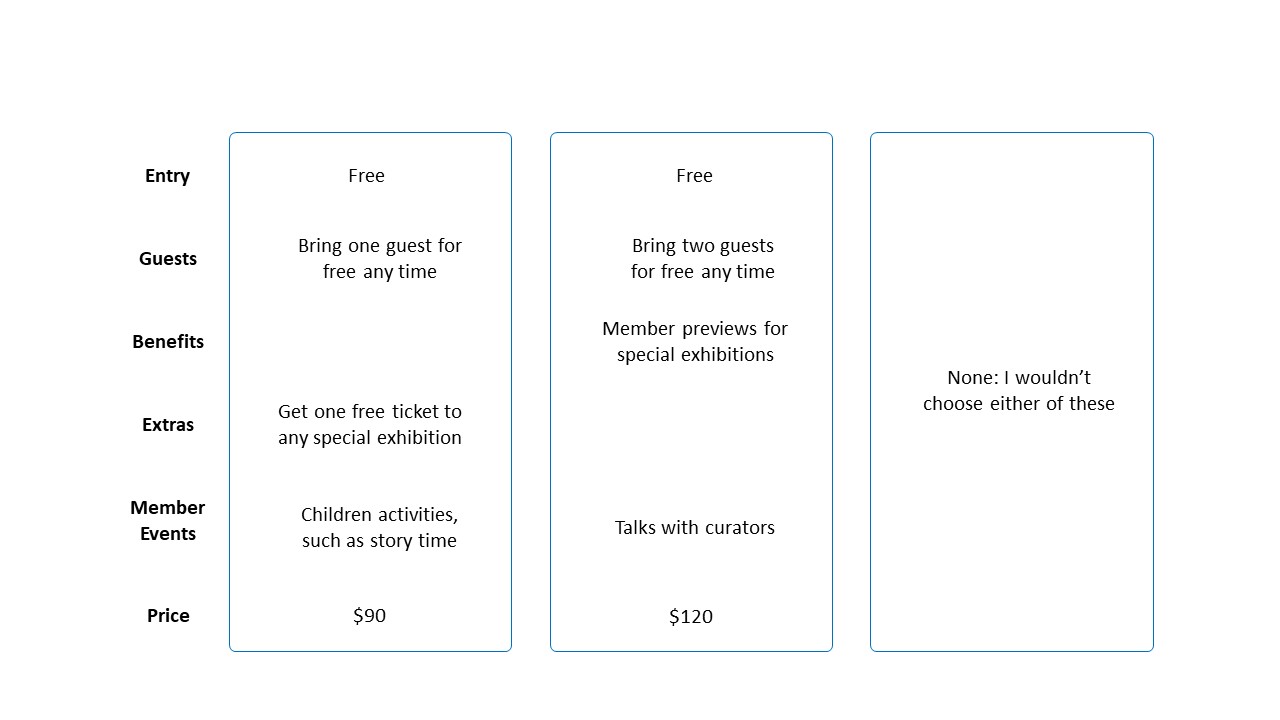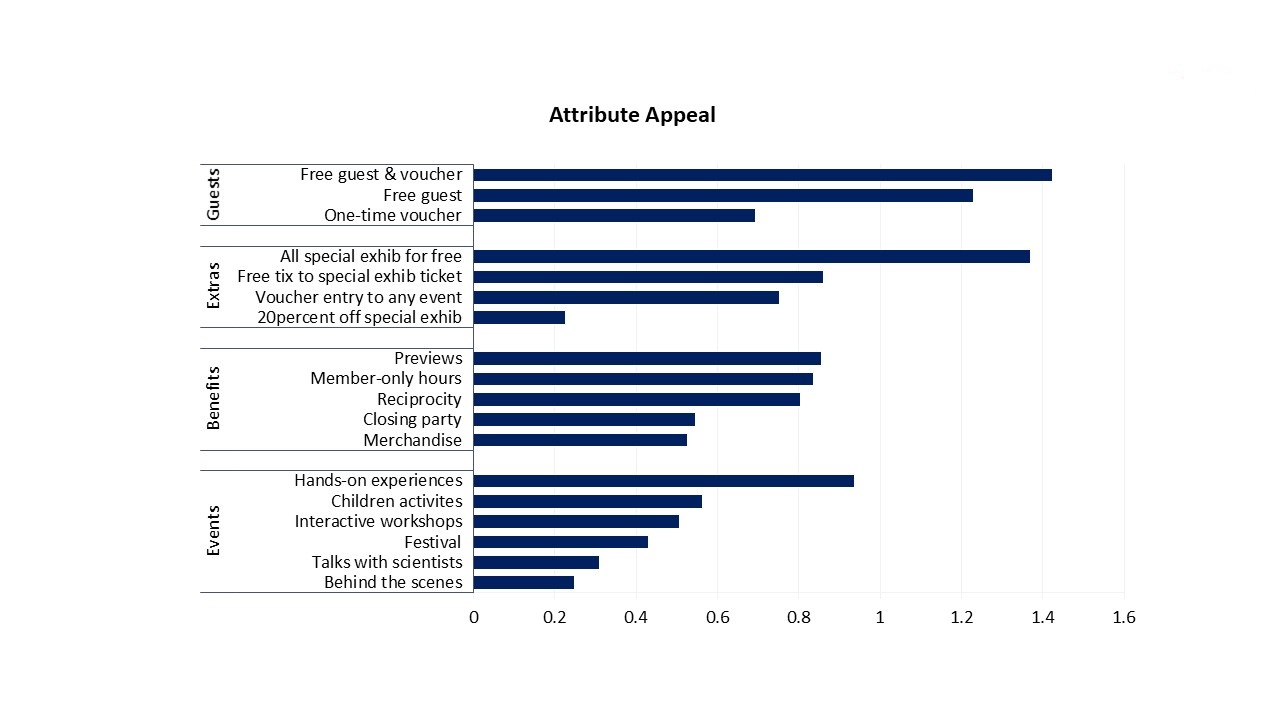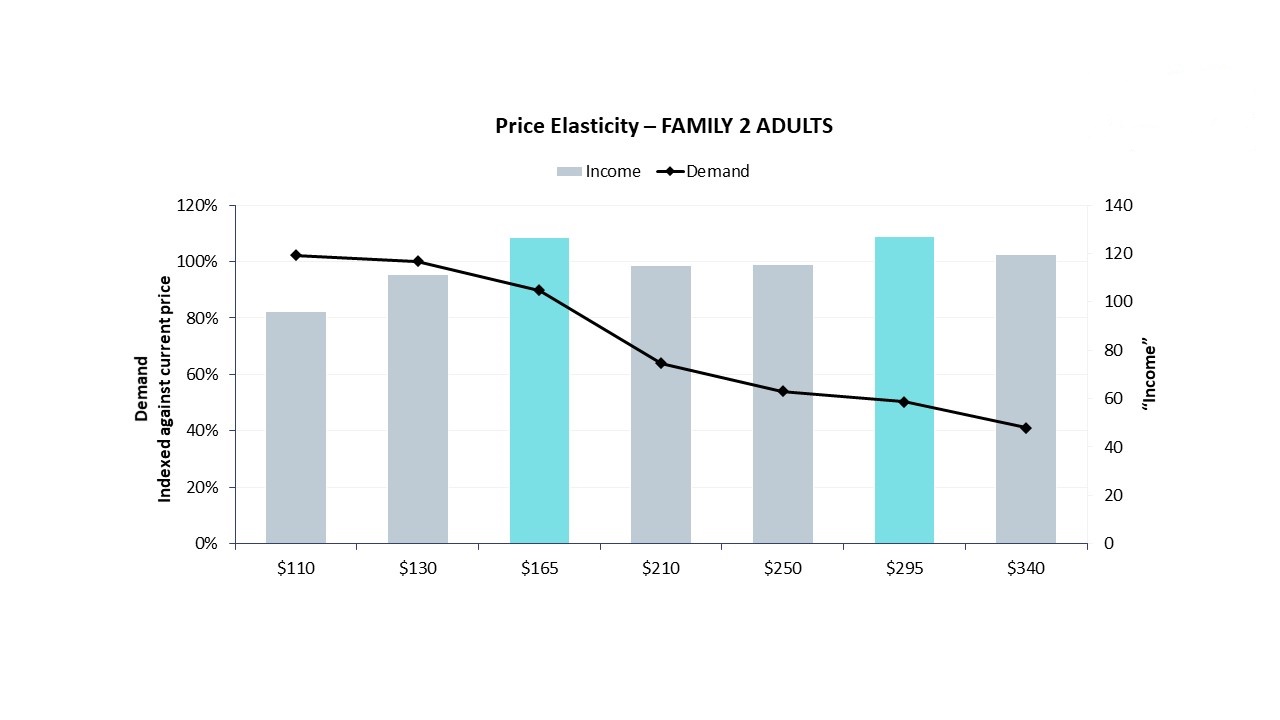Optimizing Your Membership Program: Two Critical Pieces of Research

Jennifer Nemeth
Manager, Professional Services
When it comes to making changes to your membership program, whether that’s small tweaks or a complete restructure, it’s imperative that changes be strategic, deliberate, and most importantly, data-driven. There are two primary pieces of research that are critical to making well-informed decisions about your membership program. They are: a Membership Baseline Analysis and a Conjoint Analysis.
Membership Baseline Analysis
A Baseline Analysis is a deep dive into the data in your CRM system. When you’re planning for the future of your membership program, you first need to understand what your membership has looked like in the past—what do your members look like, and how have they behaved?
Some key questions to answer using a Baseline Analysis include:
- What is your renewal rate?
- How long does it take someone to renew? Does that time differ depending on how long someone has been a member?
- What is the average length of tenure for a member?
- How does renewal rate change over the calendar year?
- How often to members actually visit your organization?
- When do they visit, and how many people do they bring with them? Are they all adults, or do they also bring children?
- How much do they spend when they visit on special exhibits and events, parking, in the gift shop, etc.
And, of course, if we’re considering changes to membership benefits:
- Which benefits are members using regularly?
- Which benefits are only certain members using (and who is using them)?
- And which benefits aren’t being used at all?
Completing a Baseline Analysis can answer these questions and more. But beyond that, it does something else that’s invaluable—it challenges your assumptions. You and others at your organization likely have a lot of assumptions about your members, and doing this data analysis is going to challenge those assumptions. Sometimes, you’ll find out you were spot on, which is incredibly reassuring! On the other hand, there will almost certainly be least one assumption you’ve had that turns out to be wrong. Or maybe it used to be right, and now things have changed. It’s clearly important to uncover that before you design your new membership program. A new program that’s based on bad assumptions or partial information is not a way to set yourself up for success.
With the information you gain from the baseline analysis, you can start to examine your existing membership offerings, with an understanding of how they’re actually being used, instead of how you think they’re being used. In addition, this lays the groundwork for the next phase of research, where you’ll actually ask people what they’re looking for—the Conjoint Analysis.
Conjoint Analysis
Conjoint Analysis is a survey-based form of primary research designed to uncover which benefits of membership your members (and potential members) value. Respondents to a conjoint survey are asked to make a choice between multiple products with different attributes at different prices. In this way, it simulates an actual buying process where you have multiple options and you either choose one or you choose not to purchase anything.
This type of survey allows you to test questions like:
- How much value would our membership lose if we take away free guest passes? Or, how much would it gain if we doubled them?
- How important are discounts to the café or parking? What if the discount were less (or more)?
- What if we added extra programming as a benefit, like a lecture series or other events?
Conjoint Analysis will allow you to answer these types of questions, and other similar questions that relate to benefits and pricing of your membership.
Below is an example of a survey question used in Conjoint Analysis. There are multiple different benefits for each option and a price at the bottom. The respondent is asked to choose which membership they purchase, or if they wouldn’t choose any of these. Then the benefits are scrambled, and they’re asked a similar question, but with different benefits and prices. This is repeated about eight times for each respondent.

When all of the results are put together, we’re able to understand the relative appeal of each benefit. We can quantify which benefits were the most attractive, and by how much.
Below is an example of the results of some benefits that were tested using a Conjoint Analysis. The length of the bars indicate the relative attractiveness of each of these different benefits. So, comparing the top two bars—you can see that free guests were particularly appealing, but adding vouchers on top of free guests added a comparatively small amount of appeal, so this told staff that they should focus on free guests, and not worry about additional vouchers.

In addition to identifying the most attractive benefits, Conjoint Analysis will also identify the revenue maximization price for your membership. Below is a chart displaying the price elasticity for a family membership with two adults, as calculated from the conjoint survey.
To read this chart—first notice the different prices along the bottom, these are the prices we tested in the survey. The black line indicates demand at each of these prices. You can see demand is highest at the lowest price, and then as the price goes up, demand decreases. There’s a particularly noticeable decrease in demand between $165 and $210, which indicates an important price thresholds.
The columns on this chart represent the corresponding income at each price, according to the level of demand. Two of the bars are highlighted in blue, because they’re indicating the revenue maximization prices. Income would be highest at these prices—$165 and $295 because of the relative demand at those prices, though at $295 there is a significant drop in demand.

Bringing the Two Analyses Together
By completing these two types of analyses, you’ll have a full picture of where your membership programs have been, and where they might be going. Using historical data from the Membership Behavior Analysis combined with data from the results of the Conjoint Analysis, you’ll be able to model membership scenarios and project resulting unit sales and revenue. This will lead you to select the membership structure that will meet your goals and the needs of your most loyal attendees.
In Conclusion
We’re at an important moment for cultural organizations, as we all re-learn our habits, hobbies, and how to interact with the world. It’s a prime time to update membership and loyalty programs. However, changing a membership program takes a lot of time, effort, and resources—so you want to feel as confident as possible that you’re making the right decisions. The best way to do that is by having the data to back you up, and these two projects: a Membership Baseline Analysis and Conjoint Analysis can give you that data.
If you’re interested in learning more about a Membership Baseline Analysis or Conjoint Analysis, let’s talk. We’re here to help your organization achieve your membership goals.

